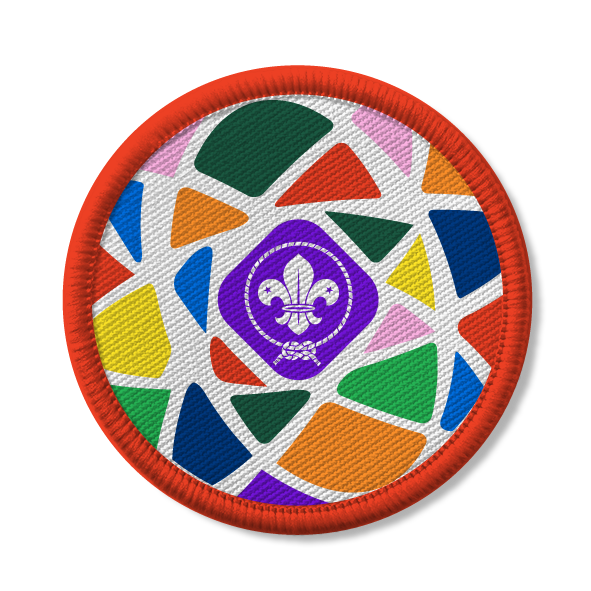
Make climate change posters
You’ll need
- Craft materials
- Paper
- Crayons
- Colouring pencils
- Pencils
- Paint, including watercolours
- Paintbrushes
- Magazines
- Newspapers
- Scissors
- Glue
Before you begin
- Use the safety checklist to help you plan and risk assess your activity. There's also more guidance to help you carry out your risk assessment, including examples.
- Make sure all young people and adults involved in the activity know how to take part safely.
- Make sure you’ll have enough adult helpers. You may need some parents and carers to help.
Planning and setting up this activity
- Some books you could read to explore water include ‘The Odd Fish’ by Naomi Jones, ‘The Whale Who Ate Plastic’ by Stephanie O’Connor or ‘Dear Earth’ by Isabel Otter.
- You might want to make the posters for your meeting place to help people remember to do certain things, such as switching the lights off, then place them around after you’ve made them.
- You might want to theme your posters around one of the Earth Tribe themes, such as picking up litter on the beach, stopping water pollution or using less water themed posters for Tidal Turners.
Running this activity
- Gather everyone together and ask everyone if they've heard of climate change. Climate change is the shift in the Earth’s weather conditions over many years. Our world has been getting hotter due to things humans are doing, such as the way we make energy, farming and cutting down trees. This is dangerous for humans, wildlife and the planet. But, it’s not too late yet to make a difference and, by working together, everyone can help to try to make it better.
- If you have any examples of posters or leaflets that campaign against climate change, you could pass them around and show them to the group. You could look at examples from Greenpeace, Oxfam, Water Aid, Rainforest Alliance or the WWF. You could talk about each one, asking what the message is in each picture, who it might be for, what it’s asking us to do and how it makes us feel.
- Tell everyone that you’re going to make a poster about climate change. Either ask everyone to get into group and give each group a message or let people choose their own message. Some ideas might be ‘Put litter in the bin’, ‘Recycle your rubbish’, ‘Turn the tap off’.
- You could ask people what they want their message to be, so everyone knows what they’re poster is about. You might want to have some templates for people to decorate if they may struggle with writing the message, or they could work with a friend or in a group to write the message.
- Now, let everyone decorate their poster. They could use paint, collage, cut out pictures, use crayons or use craft materials. For the text, people could either write the message onto the paper, have an adult write out the words for them to colour in, or they could use cut out letters or stickers to glue their message on.
- At the end, let everyone bring their work back to the circle. They could show it to others if they are happy and comfortable to. Ask everyone where they’d like to display their work, such as at home, in their meeting place or in the local community. You may need to get landowner permission.
Reflection
This activity was all about climate change and how the Earth is getting warmer because of things people do, such using lots of energy or cutting down trees. What can happen if we don’t take care of our planet? Our posters had amazing messages, such as recycling, turning off the tap, and putting litter in the bin—each of these helps protect our planet! Why’s it important to care for our planet? How do our actions, such as recycling or saving water, help animals and nature? What message did you choose for your poster? How can that help the Earth?
You had to be creative to make these posters. How did you make and design your poster? What did you have to think about? And what did you use and why? What do you like about each other’s posters and your own?
By sharing these messages, we can remind others to care for the Earth too. How can we remind people to care for the Earth every day? Where do you think we should put these posters so people can see them and remember to help our planet? What are some things you already do at home to help the planet? Why’s it important for everyone to help, not just us? You all did such a fantastic job working together to make a difference!
Safety
All activities must be safely managed. You must complete a thorough risk assessment and take appropriate steps to reduce risk. Use the safety checklist to help you plan and risk assess your activity. Always get approval for the activity, and have suitable supervision and an InTouch process.
- Glue and solvents
Always supervise young people appropriately when they’re using glue and solvent products. Make sure there’s plenty of ventilation. Be aware of any medical conditions that could be affected by glue or solvent use and make adjustments as needed.
- Scissors
Supervise young people appropriately when they’re using scissors. Store all sharp objects securely, out of the reach of young people.
Make it accessible
All Scout activities should be inclusive and accessible.
You could send pictures of their posters to your local MP, or share them with a group who work to protect the planet.
